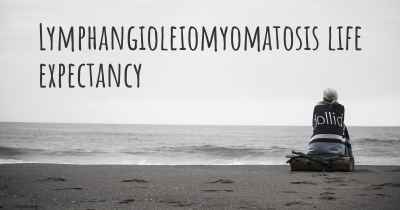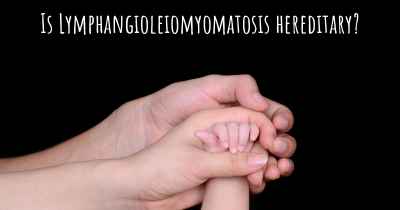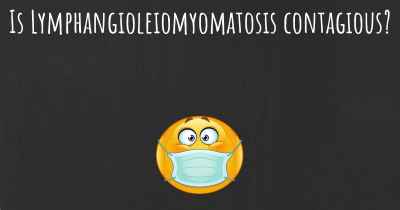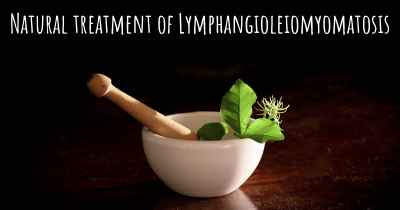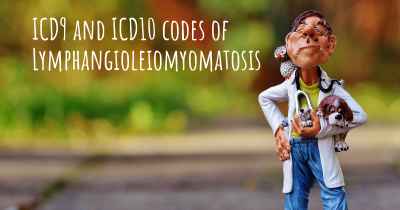Lymphangioleiomyomatosis diet. Is there a diet which improves the quality of life of people with Lymphangioleiomyomatosis?
Are you aware of a diet that can improve the quality of life of people with Lymphangioleiomyomatosis? Is there a diet that is suggested to avoid when having Lymphangioleiomyomatosis? See if there is a diet that can improve the quality of life of people with Lymphangioleiomyomatosis, recommended and to avoid food when having Lymphangioleiomyomatosis
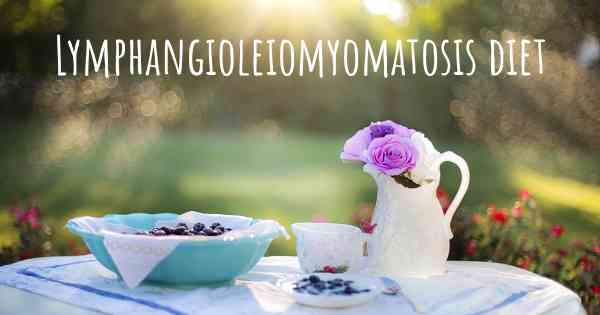
Lymphangioleiomyomatosis Diet: Improving Quality of Life
Lymphangioleiomyomatosis (LAM) is a rare lung disease that primarily affects women. It is characterized by the abnormal growth of smooth muscle cells, leading to the formation of cysts in the lungs. While there is no cure for LAM, adopting a healthy diet can help improve the quality of life for individuals living with this condition.
The Importance of a Balanced Diet
A balanced diet plays a crucial role in managing LAM symptoms and supporting overall health. It can help reduce inflammation, boost the immune system, and provide the necessary nutrients for optimal lung function. Here are some dietary recommendations that may benefit individuals with LAM:
1. Anti-Inflammatory Foods
Chronic inflammation is a common feature of LAM. Including anti-inflammatory foods in your diet can help reduce inflammation and alleviate symptoms. These foods include:
- Fatty fish (such as salmon, mackerel, and sardines) rich in omega-3 fatty acids
- Colorful fruits and vegetables (berries, leafy greens, tomatoes, and bell peppers) packed with antioxidants
- Healthy fats (olive oil, avocados, and nuts)
- Whole grains (brown rice, quinoa, and oats)
- Spices and herbs (turmeric, ginger, garlic, and cinnamon)
2. Lung-Healthy Nutrients
Consuming nutrients that support lung health is essential for individuals with LAM. These nutrients include:
- Vitamin D: Sunlight exposure and vitamin D-rich foods (fatty fish, fortified dairy products, and egg yolks) can help improve lung function.
- Omega-3 Fatty Acids: Found in fatty fish, flaxseeds, and chia seeds, omega-3 fatty acids have anti-inflammatory properties and may benefit lung health.
- Antioxidants: Vitamins A, C, and E, along with selenium and zinc, act as antioxidants and protect lung tissue. Include fruits, vegetables, nuts, and seeds in your diet to obtain these nutrients.
- Protein: Adequate protein intake is important for maintaining muscle mass and supporting overall health. Include lean meats, poultry, fish, legumes, and dairy products in your diet.
3. Hydration
Staying well-hydrated is crucial for individuals with LAM. Drinking an adequate amount of water helps thin mucus secretions, making it easier to clear the airways. Aim to drink at least 8 cups (64 ounces) of water per day. Herbal teas and fresh fruit juices can also contribute to your fluid intake.
4. Limiting Trigger Foods
While there are no specific foods that directly cause LAM, some individuals may find that certain foods worsen their symptoms. These trigger foods can vary from person to person, but common culprits include:
- Dairy Products: Some individuals with LAM may experience increased mucus production or respiratory symptoms after consuming dairy. If you notice such effects, consider reducing or eliminating dairy from your diet.
- Processed Foods: Highly processed foods often contain additives, preservatives, and trans fats, which can contribute to inflammation. Opt for whole, unprocessed foods whenever possible.
- Refined Sugars: Excessive consumption of sugary foods and beverages can lead to inflammation and negatively impact overall health. Choose natural sweeteners like honey or opt for fresh fruits instead.
5. Consult a Registered Dietitian
Every individual with LAM is unique, and dietary needs may vary. Consulting a registered dietitian who specializes in respiratory conditions can provide personalized guidance and help tailor a diet plan that suits your specific needs and preferences.
Disclaimer: It is important to note that while a healthy diet can support overall well-being and potentially improve symptoms, it is not a substitute for medical treatment. Always consult with your healthcare provider for proper diagnosis, treatment, and management of LAM.
